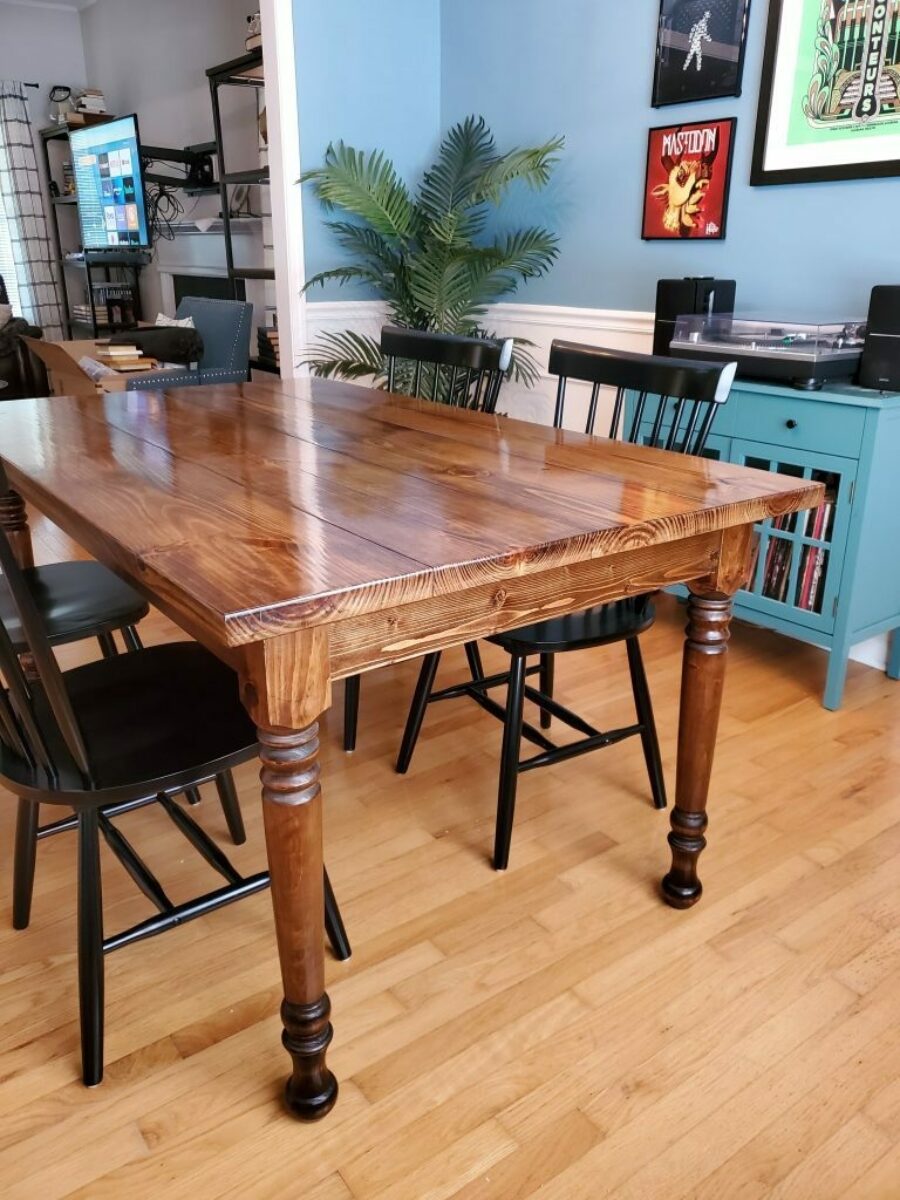Leading Fads in Dining Room Table Legs to Boost Your Eating Room
Leading Fads in Dining Room Table Legs to Boost Your Eating Room
Blog Article
Eating Table Legs: Exactly How to Select the Best Styles for Your Room
Picking the ideal table legs is important for both aesthetic and functional consistency in your dining space. Whether your area flaunts a smooth, modern ambiance or leans in the direction of a much more conventional ambiance, the design of the legs can substantially influence the overall appearance. Tapered legs exhibit contemporary style, while turned legs offer a nod to timeless appeal. Beyond design, the material-- be it warm timber or smooth steel-- plays a crucial function in establishing the tone. Exactly how do you ensure these aspects complement your existing style while offering the essential stability? The solution lies in a well balanced method.
Examining Your Dining-room Design
Just how do you figure out the very best table legs for your area? The solution begins with a detailed evaluation of your dining space design. A natural layout makes certain that your table legs enhance the overall aesthetic as opposed to clash with existing elements. Start by observing the architectural features of your dining area. Exist prominent characteristics such as exposed beams, intricate moldings, or minimal lines? These information often determine whether a typical, rustic, modern, or commercial style is most suitable.
A dining space with sleek, modern-day chairs and metallic accents might benefit from basic, streamlined table legs. Alternatively, a room loaded with vintage items and rich materials might call for elaborate, sculpted legs.
Big, open eating areas can accommodate much heavier, a lot more substantial legs, whereas smaller sized rooms require more delicate, inconspicuous layouts. By meticulously evaluating these elements, you can select eating table legs that sympathetically mix with your eating area's design.
Popular Leg Styles Explained

One prevalent design is the conical leg, renowned for its streamlined, modern-day look. This leg narrows inside out, offering a minimal allure ideal for contemporary and Scandinavian interiors. Next, the turned leg attributes complex spindle-like designs, commonly found in conventional and farmhouse setups. These legs add a touch of craftsmanship and style.
Cabriole legs, with their distinctive curves, are associated with French Provincial and Queen Anne furnishings. Their elegant, flowing lines bring a sense of class and historic beauty (dining room table legs). For those favoring a robust and simple style, square legs give sturdy support and a clean, geometric appearance, suitable for commercial or minimal rooms
Last but not least, hairpin legs offer a retro, mid-century modern vibe. Made from metal, these legs are both lightweight and strong, adding a special aesthetic comparison to wood table tops. Your Domain Name Recognizing these designs will certainly lead you in selecting eating table legs that enhance your space's aesthetic and functionality.
Material Factors To Consider

Timber is a classic choice, recognized for its warmth and adaptability. It can be found in various types such as oak, walnut, and maple, each offering unique grain patterns and colors. Metal legs, usually made from stainless steel, iron, or light weight aluminum, give a modern and industrial appearance while making certain robust support. They are normally extra resistant to wear and tear, making them a long lasting selection.

Various other products like bamboo or rattan use eco-friendly choices, bringing a natural and kicked back ambiance to the dining location. Each material has its benefits and drawbacks, and the best option will certainly depend on your certain needs and preferences.
Harmonizing Aesthetic Appeals and Performance
Attaining the perfect balance in between appearances and performance is important when choosing dining table legs. While the visual charm of table legs can dramatically enhance the general setting of a dining space, websites their practical facets can not be overlooked. The style of the legs need to integrate with the room's decoration, yet they must additionally provide sufficient support and security for the table.
Take into consideration the building layout of your space. Sleek, contemporary interiors might profit from minimal, steel legs that supply a tidy and inconspicuous look. On the other hand, conventional settings typically match transformed or sculpted wood legs that add a touch of sophistication and class.
Capability incorporates the security and longevity of the legs. Trestle legs, understood for their toughness, can supply strong support for bigger tables, making them ideal for family members or constant performers. On the other hand, pedestal legs can provide more legroom and flexibility, permitting for far better seats plans
Moreover, the elevation and positioning of the legs are critical for comfy dining. Legs placed also much inward might hamper seating, while those too near the side can limit activity. Therefore, thoughtful consideration of both aesthetic and useful aspects is paramount for an optimum eating experience.
Customization and Do It Yourself Options
Personalization opens up a realm of possibilities for developing eating table legs that are uniquely customized to your preference and needs. Particular layout components, such as turned legs, tapered shapes, or complex makings, can be incorporated to show your design.
For those likely in the direction of do-it-yourself (DIY) jobs, developing custom dining table legs provides both a satisfying experience and the possibility to achieve a bespoke aesthetic. DIY lovers can resource raw products and make use of woodworking or metalworking devices to craft legs that meet precise specs. Furthermore, many on-line tutorials and workshops give guidance, making the process more available for novices.
Eventually, whether choosing for expert personalization or starting a do it yourself endeavor, the capability to customize dining table legs makes sure that the final product harmonizes with your interior decoration vision, enhancing both functionality and aesthetic allure.
Conclusion
Choosing the appropriate eating table legs needs mindful factor to consider of the overall design of the dining area, consisting of existing architectural attributes and furniture. Inevitably, the selected table legs should match the decor, giving both visual allure and useful assistance.
Report this page